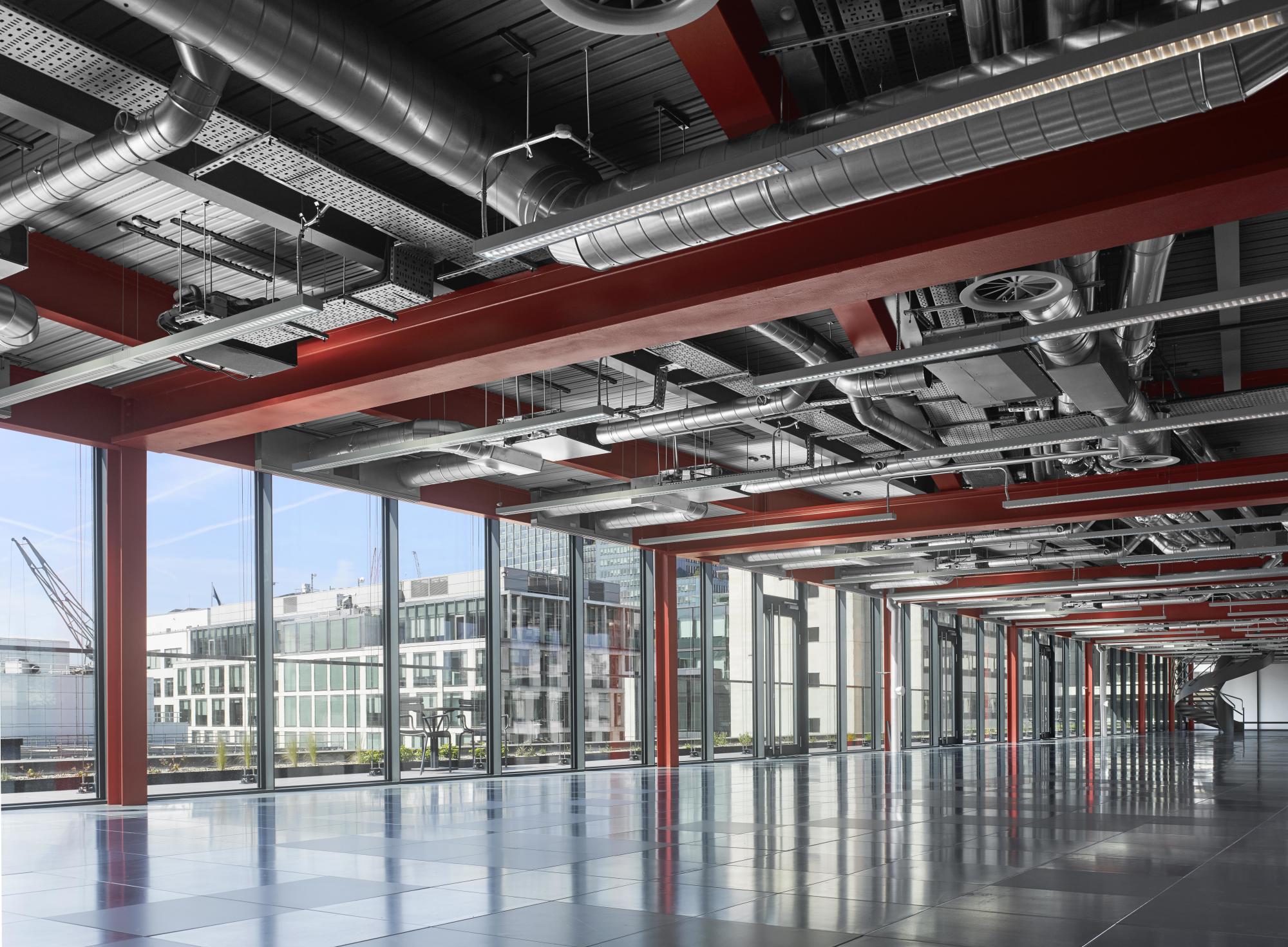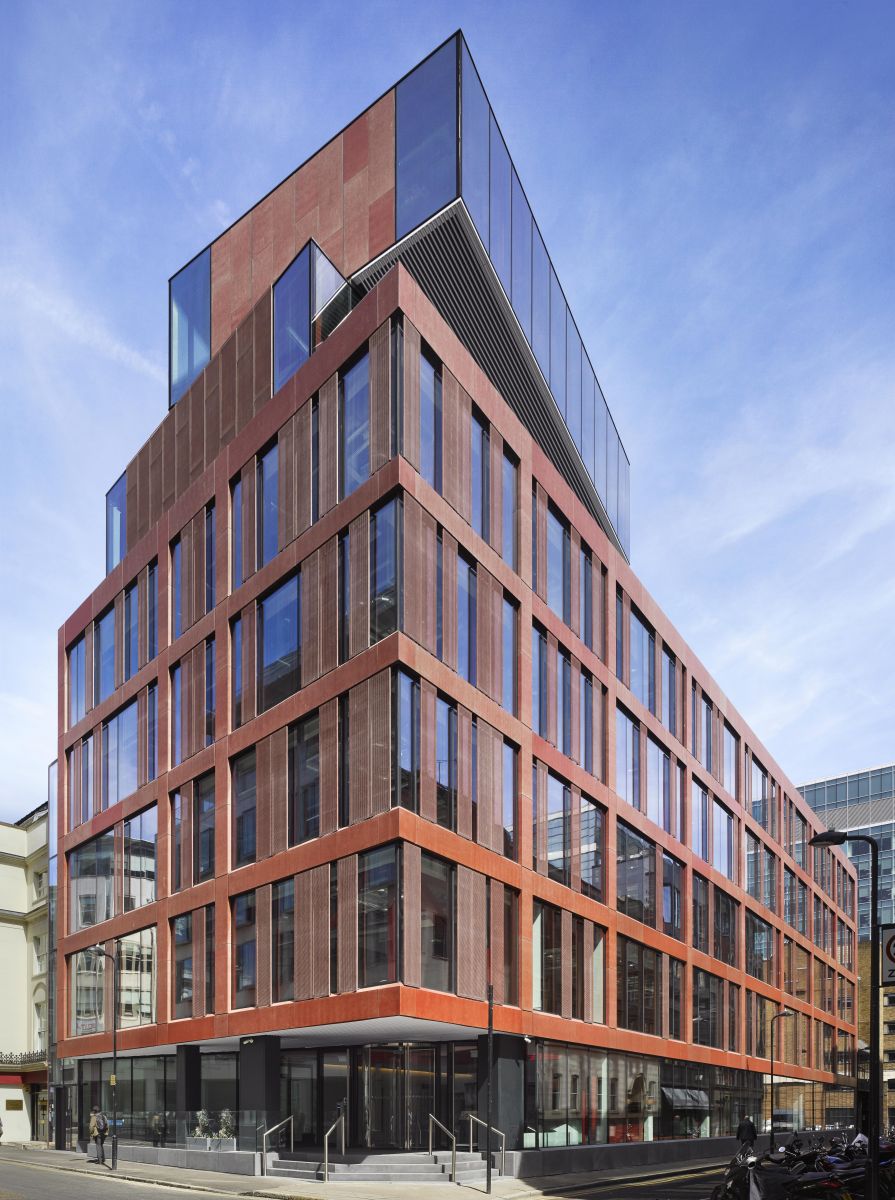The Six Feet Office Concept
Cushman & Wakefield is pioneering a new office design scheme based around the “six feet rule” of social distancing. The global real estate...
Read Full Article
With COVID-19 creating a dramatic and sudden shift in the way we work, there’s little doubt that this pandemic will change the commercial real estate sector.
We all now have a much greater awareness of the relationship between our physical environment and our health, so this will naturally change how commercial offices will be designed, built and managed.
Subsequently, architecture firms like astudio will have to assess how their designs will perform in the new post-COVID-19 world and what this outbreak will mean for the offices of the future. Richard Hyams, Founding Director of astudio, gives his thoughts on the post-pandemic landscape for design and architecture.
“Technology will be crucial to the future of our office buildings. We believe there are two main areas of risk in a modern office, the air you breathe and the surfaces you touch."
–Richard Hyams
Founding Director, astudio
In the wake of the last recession, many companies decreased their square footage to cut unnecessary overheads. This meant encouraging more remote working, hot-desking and adopting creative design changes to densify the office. The evolution of the office saw individual offices, become cubicles in the late ’70s to eventually morph into the open-plan office we see today.
We can now see that one of the drawbacks of this, made more apparent during COVID-19, is the risk of transmission of germs through forced proximity; your tube ride to work, taking an elevator or sharing working space with several colleagues. We are now looking at many areas of the workspace in a new light questioning what once we took for granted, sharing lifts, communal kitchens, even opening doors and calling the lift.
With social distancing guidelines prompting unprecedented levels of remote working and, with 23% of workers wanting to work from home more often following COVID-19, according to Propmodo. The way we will design the office of the future will change.
A London tube carriage has an occupation density of 4-6 passengers per square metre in the rush hour. A typical office building is up to 60 times safer, offering 12 square metres per employee (according to BSO guidelines).
We expect demand for new contactless solutions integrated into commercial buildings to grow — especially now that people are hyperconscious of this new threat contamination poses.
Building developers and managers will be capitalising on tools such as voice or motion-activated technology and movement tracking apps, to make more of what this technology can offer. This could be a voice-controlled elevator, a remotely operated printer or the greater use of sensor and facial-recognition software.
Technology will be crucial to the future of our office buildings. We believe there are two main areas of risk in a modern office, the air you breathe and the surfaces you touch.
We took a critical look at our most recent completed project to assess how it would fair with this new way of thinking. Our recent 70 Wilson project used motion-activated lights and sensor-activated technology throughout the building to improve its energy efficiency. With our new priorities, these technologies can be implemented to reduce unnecessary contact between employees and minimise any potential risk of contamination.
Rethinking their real estate needs, we think businesses will now opt for smaller satellite offices with more advanced technology infrastructure and multi-functional meeting spaces that can integrate with video conferencing software. De-densification is also a possibility, with footfall routing — better directing the movement of people within a space — and the implementation of stricter distances between desks reducing proximity in the office.
Our 70 Wilson project highlights further possibilities, such as monitoring occupancy levels across a building. Presently 70 Wilson automatically counts the number of people entering and leaving its premises. This could be extended to monitor occupational density on each floor and alert people as they travel in the lift. Such systems could help to encourage safer working practices by prompting behavioural changes based on potential levels of proximity to others.

Picture: Exterior of 70 Wilson project
Even before we worried about airborne pathogens, office air quality was already a growing concern for employees.
Just 20 per cent of cities offer outdoor air quality that meets the World Health Organization’s guidelines. Worse yet, a study conducted by the US Environmental Protection Agency found that air pollution indoors can often be between two and five times than outdoors. This results from the release of chemicals from a variety of products such as paints and cleaning products, and poor ventilation.
According to the medical journal The Lancet, 800,000 people die every year as a result of poor air quality in their workplace. Add in coronavirus, which is believed to be transmittable through the air and can linger even after a contagious person has left the room, and the dangers of poorly ventilated buildings become even clearer.
Displacement air systems, which we introduced as part of a recent school project for Twickenham Academy, could be one solution for this. Fresh air enters up from the floor, gripping to the body and ensuring that the air we breathe is as clean as possible, while maintaining a maximum distance between the air coming in and that going out of the room. By leveraging solutions such as improved airflow and ventilation, we will be better able to future-proof our office and commercial spaces against these issues.
A significant obstacle in addressing these problems is that much of London’s commercial real estate sector resides in outdated structures, poorly designed to meet the demands of our present society. Stuffy old office blocks with poorly insulated windows, inadequate air circulation and significant carbon footprints — many of which are slated for demolition.
While this presents an opportunity to design new buildings fit for life after COVID-19, new projects will have lead times spanning multiple years. Demolition, and subsequent construction sites, can also be a significant contributor to greenhouse gas emissions, material waste and pollution.
By considering how our previous projects might perform in the post-COVID world, we at astudio can take new inspiration for how we build the offices of the future. Retrofitting is certainly a viable and sustainable way forward. By installing new ventilation systems, more energy-efficient skins and other technologies to improve quality of life for occupants, we can help to develop offices fit for life after COVID-19.
Picture: Interior of 70 Wilson project
Article written by Richard Hyams | Published 04 May 2020
Cushman & Wakefield is pioneering a new office design scheme based around the “six feet rule” of social distancing. The global real estate...
Read Full ArticleFor some, Freedom Day marks a much-awaited return to some of our pre-pandemic habits, including working at the office instead of at home. But is everyone keen to come...
Read Full ArticleAround half of UK office workers feel confident about returning to work without a fully vaccinated workplace. Research shows that 80 per cent of UK office...
Read Full ArticleWith businesses already putting plans in place to get people back into the office, ensuring good hygiene practices is paramount in preventing any spread of coronavirus in...
Read Full ArticleA smart-monitoring technology company has launched a wearable smart tag designed to make social distancing easier. The body-worn Orbi-Trace smart tag gives the...
Read Full ArticleBureau Veritas is stressing the need to carry out indoor air quality surveys, swab-sampling programs and quantification of fresh air assessments, to ensure premises...
Read Full ArticleIn an address to MPs today, Boris Johnson has tightened COVID-19 restrictions in England, calling on people to work from home where possible and pausing plans for...
Read Full ArticleBoris’ new rule of six doesn’t apply to workplaces, but how might the tightening of lockdown measures affect general confidence when returning to...
Read Full ArticleAdapting workplaces to increase employee confidence could cost larger property owners several million pounds, according to a report by the Financial Times. Liviu...
Read Full ArticleThe Transport Minister has told a London radio station that: “Our central message is pretty straightforward: we are saying to people it is now safe to return to...
Read Full Article